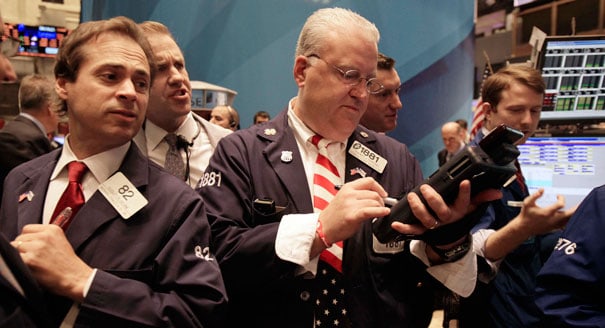
The bull market may be losing steam. But if it is petering out, investors may fare best by sticking with the winners—stocks with the most price momentum over the past year.
Momentum is one of several “factors” that academics have identified as a source of outperformance. The thinking is simple: Stocks that have beaten the market over the last 12 months are likely to keep doing so, while those that have trailed will continue to play catch-up.
It’s a follow-the-herd mentality. And it’s one of the riskier ways to invest—no one wants to be the last fool to buy a stock just before it topples over.
But academics have found that over long periods, momentum stocks tend to fare better than average (precisely because they’re riskier). And momentum worked wonders last year: The iShares Edge MSCI USA Momentum Factor ETF (MTUM) returned 37.5% versus a 21.8% gain for the Standard & Poor’s 500 index. MTUM is beating the market again this year, returning 3.5% versus a -0.5% loss for the S&P 500.
Granted, the momentum effect may be wearing thin, according to James Paulsen, chief investment strategist at Leuthold Group. Excess returns for high-momentum stocks were much higher from 1950-1980, he writes in a note this week. The top 30% of large-cap stocks with the best 12-month performance beat the market by an average of 5% before 1980, but excess returns have dwindled to just 2% since then. Since 1980, moreover, momentum has matched the market for long stretches—throughout the 1980s, for instance—and produced scant outperformance since 2000.
But Paulsen thinks momentum may have legs now. The strategy seems to fare best when the economy is expanding in a Goldilocks zone—not too weak or strong. At a current 4.5% nominal growth rate (unadjusted for inflation), the economy is growing at the low end of its middle-range since 1980, he points out. “This should improve Mo investment returns and lower the frequency of negative results!” he writes. There’s also room for economic growth to pick up without putting the brakes on momentum stocks, he adds.
Analysts at Bank of America Merrill Lynch also favor momentum. They argue that momentum is one of the best performing factors (with growth) at the end of bull markets. The bull may not be over, but if it is starting to lose steam, investors are likely to fare best by sticking with what’s worked, Merrill says.
Investors who want a broad-market momentum ETF should consider MTUM or PowerShares S&P 500 Momentum Portfolio (SPMO) or SPDR S&P 1500 Momentum Tilt ETF (MMTM). The funds have rock bottom expense ratios of 0.15% or less, and they’re each beating the S&P 500 this year. Longer term, MTUM has the best record (and the lion’s share of momentum ETF assets with $7.7 billion).
A few sector momentum ETFs are faring better, partly because the sectors are also beating the market. The top performer this year is PowerShares DWA Healthcare Momentum Portfolio (PTH), delivering an 8% return, followed by PowerShares DWA Energy Momentum Portfolio (PXI), returning 7.4%, and PowerShares DWA Technology Momentum Portfolio (PTF), with a 6.6% gain.
